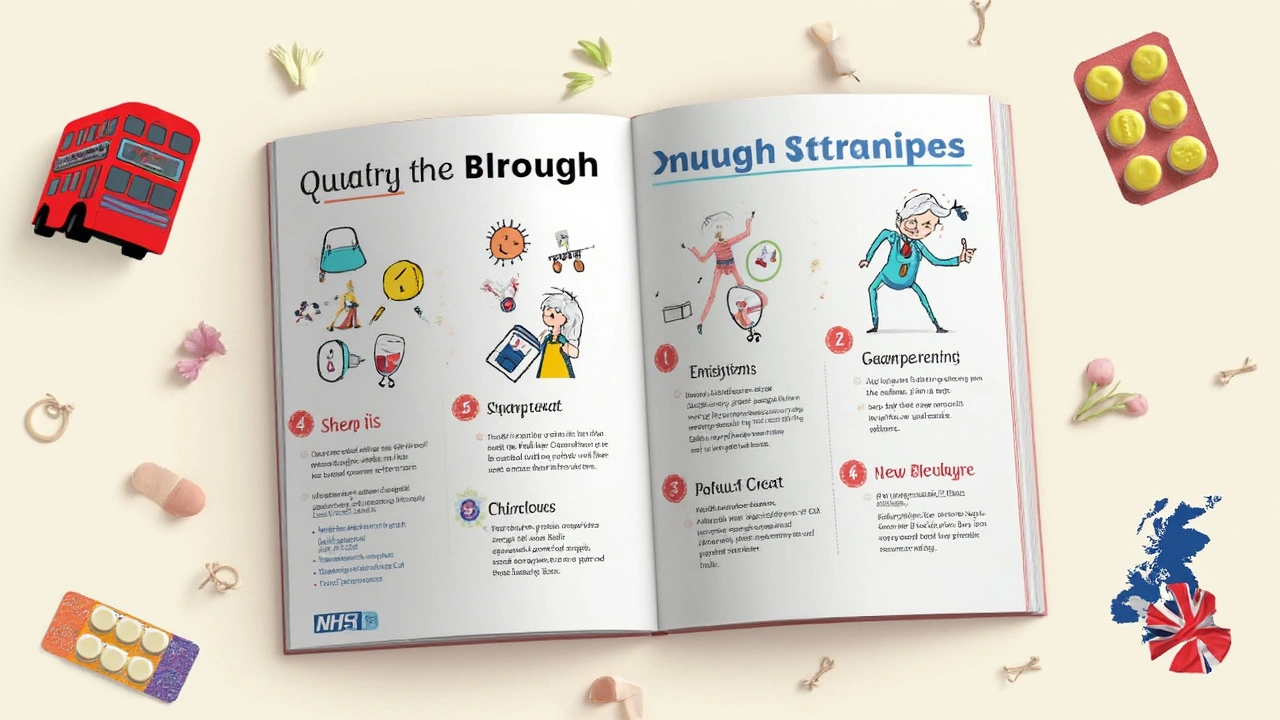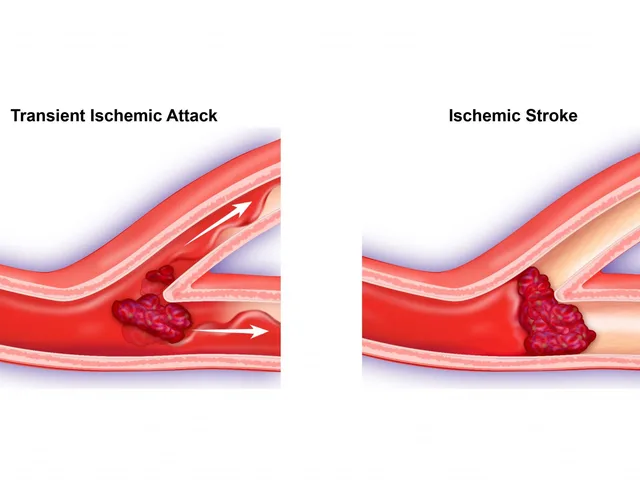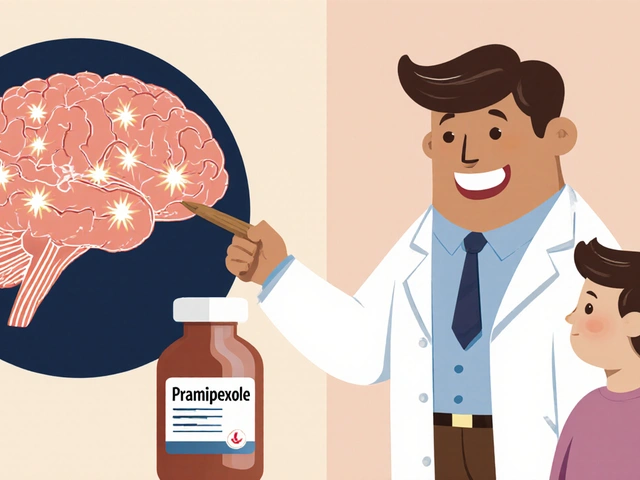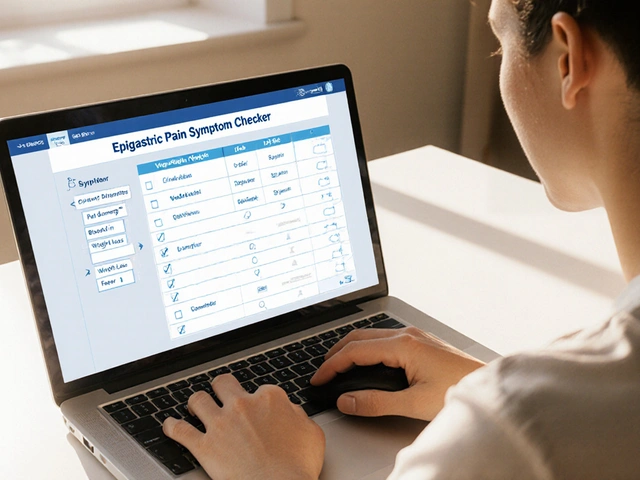Why Might Gabapentin Stop Working?
Gabapentin was never sold as a miracle fix, even though it’s become a first-line treatment for everything from nerve pain to restless legs and sometimes even anxiety. But for quite a few people, this drug just doesn’t pull its weight in the long run. Ever wonder why? Well, for starters, gabapentin side effects are real, but sometimes it’s not even about the side effects—the real problem is that your symptoms just don’t budge or get worse despite taking your meds on time, every time. You may have heard from someone that gabapentin works by tinkering with calcium channels in the nerves, dialing down abnormal firing. If your pain or seizures are more stubborn, or have different underlying causes, gabapentin’s mechanism might not fit the bill.
Here’s something interesting: There’s solid evidence showing that up to 40% of people with diabetic neuropathy or postherpetic neuralgia don’t get much benefit from gabapentin. Some folks see decent relief at first, then it fades as their bodies develop a tolerance—yep, even with normal dosing. For people with chronic pain, this can mean a frustrating rollercoaster of hope and disappointment. And it’s not just about symptom control; for a lot of patients, everyday energy, mood, or quality of life just stalls while on this drug. Suddenly, you’re left with pill fatigue—a sense that you’re taking something that just isn’t earning its keep.
If you’re thinking about switching, you’re not alone. It’s a common story: patients notice their pain scores haven’t dropped (or have even gone up), sleep still sucks, and those weird tingles, shocks, or stabbing pains are just as bad as ever. Some develop what’s called “paradoxical reactions”—increased irritability, anxiety, or even more frequent headaches. Don’t ignore these signs. Remember, your experience is valid, and if gabapentin isn’t serving you, it’s worth asking about alternatives.
Clear Signals It’s Time to Consider a Change
Much like a car that keeps stalling, the clues that gabapentin isn’t working are hard to ignore. First, there’s the ‘no change’ zone—if you’ve been up to a decent dose for several weeks and your main symptoms just haven’t shifted, that’s a red flag. Don’t buy into advice to ‘wait it out’ for months. Most studies show people feel a difference (for better or worse) within 4–8 weeks. If you’re still in the same boat after two months, something needs to give.
Another big clue is the daily struggle: Are you still losing workdays, missing out on time with family, or skipping favorite hobbies because of persistent pain or seizures? For some, gabapentin starts out strong, then sort of fizzles—a good run, then a sudden plateau or drop-off. If you notice increasing neuropathic pain, signs of allodynia (pain from light touch), or new types of pain creeping in, gabapentin might just not be your match. For those using it for seizures, breakthrough events are an urgent cue to revisit your plan.
Side effects count, too. Classic bothers—dizziness, brain fog, drowsiness, swelling of hands or feet, trouble thinking straight—shouldn’t be your ‘normal’ while seeking relief. Some people even struggle with swelling (edema), weight gain, and pesky vision changes. There’s also the emotional piece. Gabapentin can occasionally worsen depression, or make you more prone to mood swings and sleep disruption. If that sounds familiar, raise it with your prescriber. Trust your gut: if you feel off, or your family and friends say you’re not yourself, don’t just shrug it off.

Steps to Prepare for a Safe Transition
Ending a medication that’s not helping can be weirdly scary. Nobody loves the idea of swapping one unknown for another, but the good news is, smart planning makes all the difference. First things first: Don’t just stop gabapentin cold-turkey. Rapid withdrawal can cause sweating, nausea, anxiety, confusion, and sometimes even worsening seizures or severe pain. There’s also legitimate risk for withdrawal symptoms—especially if your dose is above 600 mg daily, or you’ve been on it for months or more.
Work with your healthcare provider to figure out the best tapering schedule. Usually, doses are lowered incrementally every few days or once a week, depending on your starting dose and how you feel through each step-down. Some clinics suggest dropping by 100-300 mg every 3–7 days, but there’s no one-size-fits-all approach. If you’re older, sensitive to medicine changes, or have had trouble tapering before, the schedule may be even slower. Your doc should watch for withdrawal warning signs at every stage.
If you’re switching directly to another med—say, pregabalin or a different neuropathic pain treatment—your team will build a bridge plan, slowly phasing in the new medication as you decrease gabapentin. This overlap can help smooth out the transition so pain or seizure control doesn’t vanish overnight. Use a med tracker app, notes in your phone, or even old-school pen and paper to keep tabs on symptoms and side effects. Now’s the time to be honest about what’s working. And keep that line open with your doc—it beats trying to brave it out solo if things go sideways at any point.
Choosing the Right Alternative: What Are Your Options?
There’s a surprising number of options out there when switching from gabapentin. But it can get overwhelming, fast. The landscape isn’t just pregabalin and nothing else; your choices depend on whether you’re battling seizures, nerve pain, fibromyalgia, or something else entirely. For nerve pain (like diabetic neuropathy or shingles pain), docs often turn to pregabalin (Lyrica) because it has similar actions but sometimes fewer side effects and, for some folks, stronger pain relief.
Some people do better with tricyclic antidepressants (like amitriptyline or nortriptyline)—not because they’re depressed, but because these meds hit nerve pain through a different set of signals. Others find luck with serotonin-norepinephrine reuptake inhibitors (like duloxetine). Carbamazepine or oxcarbazepine are old-school antiepileptic dancers—they’re throwbacks, but they can work if you’re not a responder to the newer stuff.
For non-drug options, more and more docs are talking up physical therapy, TENS units (transcutaneous electrical nerve stimulation), and acupuncture. Ever tried topical treatments? Some patches and creams with lidocaine or capsaicin can work wonders for postherpetic neuralgia or localized pain. The point: There is no one-size-fits-all answer. Your doc might have you try a few before landing on the right fit, and that’s normal. Don’t overlook lifestyle add-ons—gentle exercise, mindfulness, sleep strategies—they sound trivial, but when thrown into the mix with the right med, they can tip the odds in your favor.

Tips for a Smooth Medication Switch
Switching meds can feel like you’re walking a tightrope—part trust-fall, part science experiment. But you can stack the deck in your favor with a little grit and prep. First, set clear goals before you start: What are you hoping this switch will fix? Less pain, more energy, better sleep, fewer side effects? Write these down; refer to them often, especially if doubt creeps in mid-transition. Keep a symptom journal. A few words each day about pain, mood, sleep, and side effects can give your provider valuable ammo to fine-tune your new treatment plan.
Don’t forget about potential interactions if you’re adding a new med—herbals, supplements, or over-the-counter stuff can mess with your new script’s effectiveness. In fact, a recent survey found at least 18% of people on gabapentin or pregabalin were also taking supplements that could interact—so give your doc the full scoop, even if you think something is ‘just natural.’ Stay hydrated, eat regular meals, and avoid booze or heavy sedatives during the switch. Your body is already working hard to recalibrate, so give it the basics it needs.
Here’s a little-known tip: caffeine can worsen nerve pain for some, while others say it helps. As you adjust meds, pay attention to how coffee or tea affect your pain level. Lean on support—family, friends, online support groups—because mental stress makes pain and anxiety worse. If your symptoms change suddenly (wild pain spikes, confused thinking, trouble breathing), call for help. Don’t play superhero.
Check in with your healthcare team regularly, and don’t settle for a solution that doesn’t work. Your pain, your energy, and your sanity matter. Switching should make your life better, not add chaos. Track your journey, stay vocal, and don’t hesitate to tweak the plan until you find relief.






Comments
This whole gabapentin thing is just Big Pharma pushing pills on people who don’t need them. I’ve seen guys on it for years and they’re just zombies. Time to kick the habit and get real.
I’ve been on gabapentin for 3 years for neuropathy. At first it helped, then it didn’t. I felt like a ghost in my own body. Switching to nortriptyline was a game-changer. Not perfect, but I can sleep again. You’re not alone in this.
The pharmacological paradigm of neuropathic pain management remains fundamentally reductionist. Gabapentin, as a calcium channel modulator, operates within a mechanistic framework that fails to account for the phenomenological complexity of chronic pain. One must inquire: Is the body’s suffering being addressed, or merely suppressed by molecular interference?
True healing necessitates a holistic epistemology-one that integrates neurobiology with lived experience, not merely substitution of one pharmacological agent for another.
Ugh I knew someone would post this. I took gabapentin for 8 months and gained 22 lbs, cried every night, and my husband said I looked like a zombie. 😔 Then I quit cold turkey and had seizures. So yeah, it’s a trap. But so is quitting. I’m stuck. 😭
gabapentin is like a bad roommate. at first its chill, then it starts stealing your food and never cleaning up. i tried pregabalin and it was like gettin a new roommate. still not perfect but at least he dont snore so loud.
I want to emphasize: this is not a failure on your part. Medication responses are deeply individual, and the fact that you’re seeking alternatives shows strength, not weakness. Please document your symptoms meticulously-your body is speaking, and your provider needs to hear it clearly. You deserve care that honors your experience.
Let’s be real. Gabapentin is a controlled substance disguised as pain relief. The FDA knew about the abuse potential since 2016. They’re pushing this because the opioid crisis forced them to find a new drug to monetize. TENS units? Acupuncture? Those are free. Why would they let you know that? They want you hooked on the script. Wake up.
I’ve been through three different meds for fibromyalgia. Gabapentin was the one that made me feel like I was drowning in syrup. Switching to duloxetine was terrifying-but I did it slowly, with my doctor’s help. The fog lifted. I could laugh again. It’s not about giving up on meds. It’s about finding the one that lets you live, not just exist.
I’ve been on gabapentin since 2018. I swear, the government put it in the water. Why? To keep us docile. You think your pain is real? Nah. It’s the neurochemical manipulation. I started taking magnesium, turmeric, and doing cold plunges. My pain dropped 70%. They don’t want you to know this. But now you do. 😎
This is why Americans are weak. You take a pill for everything. I’ve had nerve pain since 1999. Didn’t take a single pill. Just walked. Lived. Didn’t cry about it. You’re not sick. You’re lazy.
As a chronic pain warrior in Lagos, I can tell you this: gabapentin is a luxury many of us can’t afford. But even when we get it, the response varies wildly. I tried it, it didn’t work. Then I found a local physiotherapist who taught me breathing techniques and targeted stretches. My pain didn’t vanish-but my life came back. Don’t underestimate non-pharm interventions. Your body remembers how to heal. You just need to listen.